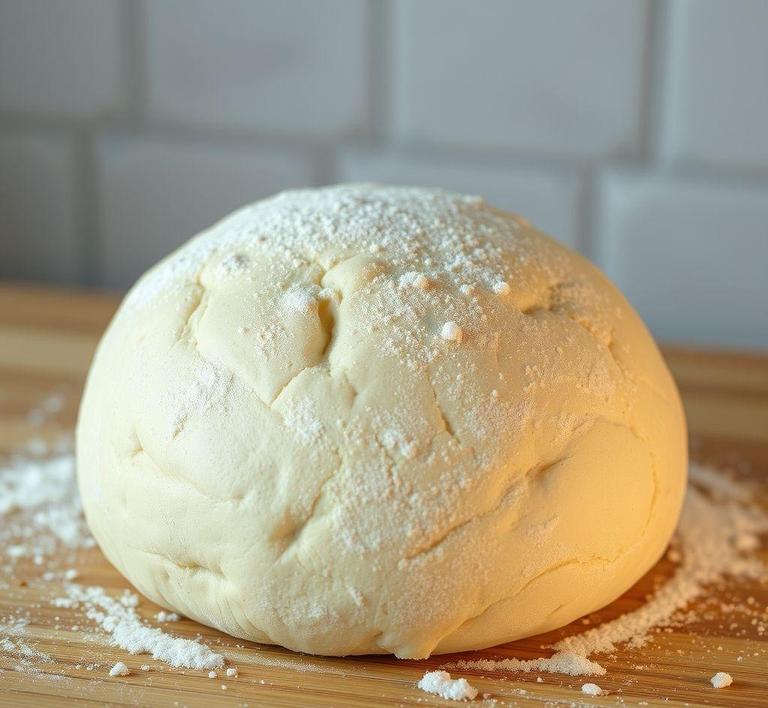If you’ve ever found yourself with leftover bread dough and wondered if you can refreeze it for later use, you’re not alone! Refreezing bread dough is a great way to save time and avoid waste, especially if you’ve made a big batch or just don’t have enough time to bake it all. The good news is, yes, you can refreeze bread dough! However, there are some important things to keep in mind to ensure it still rises and bakes well the next time you use it. From the right freezing technique to proper thawing, this guide will walk you through everything you need to know to get that dough back in action!
Can You Refreeze Bread Dough?

When you’re in the midst of baking bread and find yourself with extra dough, the thought of preserving it for future use might cross your mind. This leads to a common question: Can you refreeze bread dough? In short, yes, you can refreeze bread dough, but there are a few important factors to keep in mind. The process of freezing dough is a handy trick for saving time, but not all doughs are created equal, and how you freeze and thaw the dough can greatly affect its final quality.
Bread dough, like many other types of dough, contains yeast, which is a living organism that feeds on the sugars in the flour and produces carbon dioxide, causing the dough to rise. Freezing dough halts this process, and while you can refreeze dough, it’s not always the best practice for achieving the ideal texture and flavor in the final product. When dough is frozen, yeast can become less active, and if you don’t handle it properly when refreezing, it might not rise as expected, resulting in dense or flat bread.
That said, refreezing dough isn’t necessarily a no-go. The key is to freeze and thaw the dough carefully, and consider the type of dough you are working with. Some bread doughs, especially those made with lower yeast content or those that don’t rely heavily on yeast fermentation, are better suited for freezing and refreezing than others.
How To Refreeze Bread Dough?
The process of freezing bread dough requires a bit of precision to ensure the best results. Here’s a step-by-step guide to help you refreeze dough properly:
-
Prepare the Dough for Freezing:
Before you freeze your dough, let it go through its first rise. This initial fermentation period allows the yeast to activate and the dough to develop its structure. Once the dough has risen, punch it down to release excess gas, which helps prevent the dough from becoming too hard when frozen.
-
Divide and Portion:
If you have a large batch of dough, it’s best to divide it into smaller portions. This makes it easier to thaw only what you need later on. Portioning also allows for more even refreezing and quicker thawing.
-
Wrap the Dough:
Wrap the dough portions tightly in plastic wrap or place them in airtight plastic bags. Removing as much air as possible from the wrapping helps prevent freezer burn, which can ruin the texture and flavor of the dough. For added protection, you can place the wrapped dough in a second layer of foil or a plastic container to further guard against air exposure.
-
Freeze the Dough:
Place the wrapped dough in the freezer. Ideally, freeze the dough at a consistent, low temperature, as fluctuations in temperature can impact its quality. You can freeze the dough for up to three months without significantly affecting its structure, though the fresher you use it, the better.
-
Thawing the Dough:
When you’re ready to bake the dough, transfer it from the freezer to the refrigerator to thaw overnight. This slow thawing process allows the yeast to begin reactivating and ensures that the dough will rise properly during its second rise. Avoid thawing the dough at room temperature, as this could cause it to over-ferment or become too warm too quickly.
-
Refreezing (If Necessary):
If you’ve thawed the dough and haven’t used all of it, you can refreeze the unused portion, but it’s important to be cautious. Refreezing dough multiple times can degrade the texture of the bread. After the dough has risen once and been shaped, it’s best to bake it before refreezing the leftovers. If you must refreeze the dough, ensure it is thoroughly wrapped again to prevent air exposure.
Quality Impact
Refreezing bread dough can affect the quality of the final loaf in a few noticeable ways, particularly with the texture and flavor. Here’s a closer look at the potential quality impact:
-
Yeast Activity:
The freezing process puts yeast into a dormant state, but it doesn’t kill it. However, repeated freezing and thawing can weaken the yeast, reducing its ability to rise properly during the second proofing. The result? A denser loaf with a less airy crumb. While the bread might still be edible, it may lack the light and fluffy texture you’re aiming for.
-
Flavor Changes:
Freezing dough can alter the flavor as well. Yeast ferments sugars in the dough during its rise, and freezing halts this process. When dough is refrozen, the yeast might not ferment sugars as efficiently during the second rise. This can lead to bread with a slightly bland flavor or one that lacks the full depth of flavor developed during the fermentation process.
-
Texture:
Dough that’s frozen and refrozen can become overly tough or chewy. The gluten network in the dough may be compromised, which can cause the texture of the baked bread to be denser or chewier than desired. Additionally, if the dough is exposed to air during freezing, ice crystals can form, which can lead to cracks and a poor final texture once baked.
-
Moisture Loss:
When dough is frozen, the moisture content can become uneven, leading to a dry loaf. This is especially true if the dough isn’t wrapped tightly enough, which leads to freezer burn and moisture loss. When the dough is refrozen, you may end up with a loaf that is drier or more crumbly than freshly prepared dough.
-
Rise and Oven Spring:
A significant consequence of refreezing dough is the reduction in the dough’s ability to rise properly during baking. The second proofing stage may not yield as much lift, resulting in a flatter, denser loaf. This is particularly true for doughs with a high yeast content, which rely heavily on the fermentation process to achieve volume and texture.
Refreezing bread dough is certainly possible, but it’s not always ideal if you’re aiming for the best results. The most significant concerns with refreezing dough are the potential decline in yeast activity, loss of flavor, and changes to the dough’s texture. To preserve the best quality, it’s advisable to freeze dough in smaller portions and to avoid refreezing it more than once. Freezing dough after the first rise and then thawing it properly is the key to maintaining a satisfactory outcome.
If you’re a regular bread baker, refreezing dough might be a useful option in a pinch, but if you’re looking for the perfect loaf with the lightest texture and the most developed flavor, baking fresh dough is always the best route. So, while you can refreeze dough, it’s always worth considering whether you want to take that extra step or bake it fresh the first time around.
Is It Safe To Refreeze Bread Dough?
Refreezing bread dough is a topic that often raises questions among home bakers and culinary enthusiasts alike. The short answer is: yes, you can refreeze bread dough. However, whether or not it’s safe and ideal for the dough’s quality is another matter entirely.
When it comes to bread dough, freezing is a common method for preserving it, especially if you’ve made a large batch or want to prepare dough in advance for later use. Freezing bread dough slows down the fermentation process, giving you more flexibility in when you bake it. However, the act of refreezing introduces certain risks.
The primary concern with refreezing bread dough is that the yeast within the dough will be negatively affected. Yeast is the magical organism that makes bread rise, and its activity is highly sensitive to temperature. When bread dough is frozen, the yeast becomes dormant, essentially "pausing" the fermentation process. If the dough is properly thawed and the yeast reactivates, it can still perform its job. But when you refreeze the dough, the yeast undergoes additional stress, which can harm its ability to rise properly. This might result in a denser loaf or one that doesn’t rise as much as expected.
Another important consideration is the dough’s texture. As the dough freezes, the water within it forms ice crystals. When refrozen, the dough may not retain the same smooth, elastic texture, leading to a rough or crumbly product once baked.
Despite these risks, refreezing bread dough can be done safely, but it requires careful handling to ensure the quality and rise of the bread are not compromised.
Signs That Bread Dough Should Not Be Refrozen
While bread dough can technically be refrozen, there are certain indicators that suggest it may be unwise or unsafe to do so. Below are some clear signs that the dough should not be refrozen:
-
The Dough Has Already Been Proofed or Partially Risen:
If your bread dough has already gone through its initial rise and you have allowed it to proof, then refreezing it is generally not advisable. The dough will have already undergone some fermentation, and refreezing it at this stage can halt the fermentation process in an unpredictable way. Once thawed, the yeast may not reactivate properly, leading to poor rising or dense bread.
-
The Dough Has Been Left Out Too Long:
If you have left bread dough out at room temperature for too long (more than a couple of hours), it could have already begun to overproof. Overproofed dough is weak and might collapse once you attempt to bake it, and refreezing this dough would likely result in an unpleasant texture or even spoilage. It’s best to discard overproofed dough rather than try to refreeze it.
-
Dough With Off or Unpleasant Smells:
If, upon smelling the dough, you detect a sour or rancid odor, that’s a clear indication that the dough has gone bad and should not be refrozen. Fermentation is a delicate process, and improper handling (such as exposure to bacteria or contamination) can cause harmful bacteria to grow, leading to unsafe dough. Always trust your senses when evaluating dough-if it smells off, it’s time to toss it.
-
The Dough Has Been Stored Improperly:
If the dough was not wrapped tightly or stored in an airtight container before being frozen the first time, it could have developed freezer burn. Freezer burn occurs when moisture evaporates from the dough during freezing, leading to dry, crumbly patches. This damage cannot be undone by refreezing, and the bread quality will be compromised.
-
Too Much Time Has Passed Since the First Freeze:
Bread dough, like any frozen food, has a shelf life. Dough stored in the freezer for longer than a couple of months might lose its potency, and even if it’s refrozen, it might not rise as expected. Yeast can survive for a time in the freezer, but eventually, the freeze-thaw cycles degrade the dough’s overall integrity.
Common Refreezing Mistakes
Refreezing bread dough can be done with care, but many common mistakes can lead to poor results or even inedible loaves. Here are some of the most frequent pitfalls:
-
Not Allowing the Dough to Cool Properly Before Refreezing:
If you freeze dough while it’s still too warm from its initial rise, you risk disrupting the yeast’s behavior. When dough is too warm, the yeast is still active, and freezing it may cause the yeast to go dormant prematurely. Allow the dough to cool to room temperature before freezing to prevent this.
-
Freezing Dough Without Proper Wrapping:
A major mistake is not adequately wrapping or sealing the dough before freezing. If the dough is exposed to air or stored loosely, it will suffer from freezer burn, which affects texture and flavor. Always wrap the dough tightly in plastic wrap or place it in an airtight container before freezing.
-
Refreezing Multiple Times:
While you may think that refreezing dough multiple times could help you maintain it longer, this actually causes more harm than good. Each freeze-thaw cycle stresses the dough, damaging the yeast and altering the texture. To avoid this, only freeze dough once, and use it within a reasonable time frame.
-
Thawing the Dough Incorrectly:
A common mistake in the refreezing process is improper thawing. If dough is thawed too quickly, say by placing it in a warm environment, the yeast can become overly active and cause the dough to overproof, leading to uneven results. Thaw dough in the fridge overnight for a gradual and controlled reactivation of the yeast.
-
Refreezing Dough That Was Partially Used:
Another mistake is trying to refreeze dough after using a portion of it. Once you’ve taken part of the dough for baking, it’s best to bake the remaining portion or discard it. Refreezing dough after partial use can lead to uneven yeast distribution, which can result in unpredictable rising and texture.
Tips And Tricks For Refreezing Bread Dough
If you are set on refreezing bread dough, here are some tips to make sure you do so successfully:
-
Freeze Dough Before the First Rise:
If you plan to freeze dough for later use, it’s ideal to do so before the dough has risen. This gives the yeast a fresh start when you thaw the dough and allows for a more consistent rise.
-
Portion the Dough:
Instead of freezing large batches, consider portioning the dough into smaller amounts. This allows you to only thaw what you need and avoids repeated freeze-thaw cycles. Individual portions can be frozen on baking sheets and then transferred to airtight containers once they’re solid.
-
Label and Date the Dough:
Label your dough with the date it was frozen and what type of bread it is intended for. This will help you keep track of how long it’s been in the freezer and avoid using dough that’s past its prime.
-
Thaw in the Fridge:
Always allow frozen dough to thaw slowly in the refrigerator overnight. This gradual process gives the yeast ample time to reactivate and prevents overproofing.
-
Use the Dough Within 1-2 Months:
While bread dough can last in the freezer for up to three months, for best results, aim to use it within one to two months. This will ensure the yeast remains viable and the dough maintains a good texture and flavor.
-
Test the Dough:
After thawing, if you’re unsure whether the dough will rise properly, do a small test by shaping and allowing it to proof for an hour or so. If it rises well, you’re in the clear. If not, consider using the dough for a more dense bread like flatbreads or focaccia.
Conclusion
Refreezing bread dough is a delicate process that requires careful handling, but it’s certainly doable if you follow the proper steps. While refreezing does introduce the possibility of poor texture, inactive yeast, and uneven rises, it can be done safely if the dough hasn’t been proofed or overexposed to heat. Keep an eye on storage conditions, use proper freezing techniques, and ensure the dough is thawed slowly and evenly. With the right care, you can enjoy fresh bread without having to start from scratch every time.


